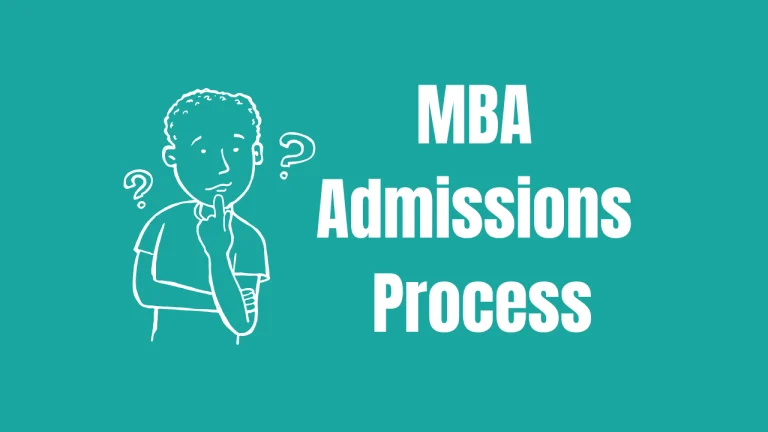Getting into a top business school is no easy task. The MBA admissions process can be rigorous and highly competitive. This guide aims to shed light on the various components of the process, offering prospective students insights and strategies to navigate their journey to business school.
Overview of the MBA Admissions Process
Getting admission into an MBA program—especially a global MBA program—requires meeting specific criteria, including academic qualifications, work experience, and a certain degree of personal attributes. The process begins with an online application, followed by an entrance test, essays, recommendations, and ends with an interview.
Admission Process for Global MBA Programs
The admissions process for global MBA programs typically involves an additional layer of complexity, with requirements often varying by country and institution. Applicants may need to prepare for standardized tests like GMAT or GRE, alongside language proficiency tests like IELTS or TOEFL if English isn’t their first language.
The Importance of Various Factors in MBA Admissions
Many elements factor into an MBA application. Let’s delve into some of the essential components that admission committees evaluate.
Importance of Academics and Test Scores
Academic performance and standardized test scores are critical factors. High scores in GMAT, GRE, or other relevant exams demonstrate academic prowess and quantitative skills, reassuring committees of your ability to handle the rigorous MBA coursework.
Role of Extracurricular Activities
Contrary to popular belief, extracurricular activities are not just ‘nice-to-haves’ in an MBA application. They show your ability to balance academic and non-academic pursuits, highlighting a multi-faceted personality.
Specific Qualities or Traits Desired in Applicants
In addition to academic qualifications and professional achievements, business schools look for traits like leadership, innovation, and a global perspective. They want individuals who can contribute to the class and community in meaningful ways.
Weight of Different Application Components in Admissions Decision
Each part of your application—from your test scores and GPA to your essays and interview—contributes to the final decision. While the weight given to each component may vary among programs, it’s crucial to ensure that each part is meticulously prepared and compelling.
Applying to Top MBA Colleges in the World
Securing a seat in a top MBA program is a multi-faceted process, one that requires a blend of rigorous academic preparation, strategic planning, and introspective self-assessment. But with careful attention to each phase of the admissions process, you can navigate this path successfully.
Decoding the MBA Application
An MBA application is a reflection of your academic journey, professional aspirations, personal values, and future potential. Most applications to top MBA colleges include a set of components designed to provide a comprehensive portrait of you as a candidate.
GMAT/GRE Score: All top MBA colleges accept the GMAT, with many now also accepting the GRE. Your score is a key component of your application and can significantly impact your chances of admission. You should aim to score above the average score of your target school to increase your chances.
Transcripts: Schools require transcripts from all undergraduate and graduate institutions you’ve attended. These provide a snapshot of your academic abilities.
Resume: Your resume should be a concise yet comprehensive summary of your professional experiences, skills, and accomplishments.
Essays: The MBA essays are your opportunity to showcase your personal journey, professional goals, and why you believe the MBA program is the right fit for you. Top MBA colleges usually require multiple essays, each serving a different purpose.
Letters of Recommendation: Typically, top MBA colleges require two letters of recommendation, usually from professional sources. These provide an external perspective on your skills and potential.
Interview: Selected applicants are invited for an interview. This is your chance to further elaborate on your experiences, demonstrate your fit with the school, and express your interest in the program.
Global MBA Admissions: A Step-by-Step Guide
Step 1: Research and School Selection: Your journey starts with understanding your career aspirations and researching schools that align with your goals. Utilize rankings, school websites, student testimonials, and alumni feedback to make an informed decision. Check out MBA school rankings to understand more about top global B-schools.
Step 2: Standardized Testing: Prepare for and take the GMAT or GRE. Remember, the earlier you start, the more time you’ll have for potential retakes.
Step 3: Application Preparation: Start building your application. Reach out to your recommenders, begin crafting your essays, and update your resume.
Step 4: Application Submission: Review your application thoroughly for any errors before submitting. Also, pay attention to each school’s specific deadline.
Step 5: Interviews: If invited for an interview, prepare thoroughly. This might include rehearsing common questions, reviewing your application, and understanding the interview format of the school.
Step 6: Decision: Once the school releases decisions, you might be admitted, rejected, or waitlisted. If admitted, you will have a few weeks to accept the offer.
The Timeline of the MBA Admissions Process
Navigating the MBA admissions process requires not just a keen understanding of its components, but also a strategic approach towards managing its timeline. The path to an MBA seat in a top business school spans across several months, marked by distinct phases that culminate in a successful admission.
Typical Timeline for the MBA Admissions Process
The journey to an MBA begins well over a year prior to the desired enrollment date, kicking off with an extensive phase of researching and shortlisting prospective business schools. This involves evaluating various programs based on several factors such as academic rigor, faculty, alumni network, location, tuition, and, most importantly, how well the program aligns with your career goals. Tools like the U.S. News and World Report’s annual MBA rankings can be invaluable during this phase.
Once you’ve narrowed down your choices, the next step, usually about a year ahead of the application deadlines, is to prepare for and take the GMAT or GRE. For instance, if you’re aiming for the Fall 2024 intake, you should ideally have your GMAT or GRE completed by the summer or early fall of 2023.
The application preparation phase follows, marked by crafting compelling essays and securing powerful letters of recommendation. It’s also during this time you will need to prepare your resume and, if applicable, your video essays. It’s advisable to start this phase around three to four months prior to the application deadlines.
Applications are typically due in the late fall or early winter for the first round, depending on the program. Following the submission, interviews take place between January and March.
Finally, admissions decisions are often released between March and April.
Understanding MBA Application Rounds
Most MBA programs have multiple rounds of admissions – commonly three, spaced out across the academic year. Each round has its own submission deadline and decision date.
The first round typically sees the highest number of applicants, and hence, the competition is intense. However, it also provides the highest chances of acceptance as all the seats for the class are available.
The second round, often the largest, has fewer available spots, but also fewer applicants, creating a balance between opportunity and competition.
The final round usually has the fewest spots available, which may make it seem highly competitive. However, fewer applicants can also mean less competition, making it a viable option for some candidates.
For example, Harvard Business School’s MBA program typically has three application deadlines: Round 1 in early September, Round 2 in early January, and Round 3 in early April.
Planning your application based on these rounds and their timelines is crucial in ensuring your MBA admissions process is effective and efficient.
By understanding the process, planning accordingly, and presenting a compelling application, prospective MBA students can increase their chances of gaining admission to their dream business school.





